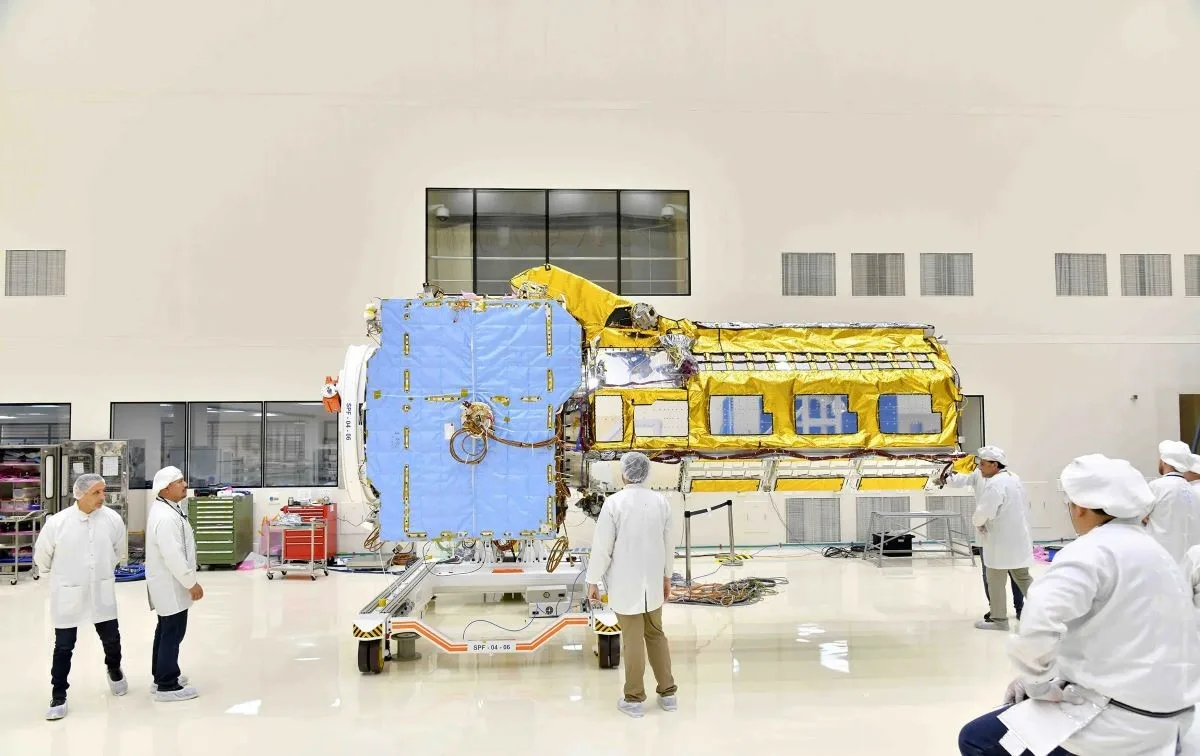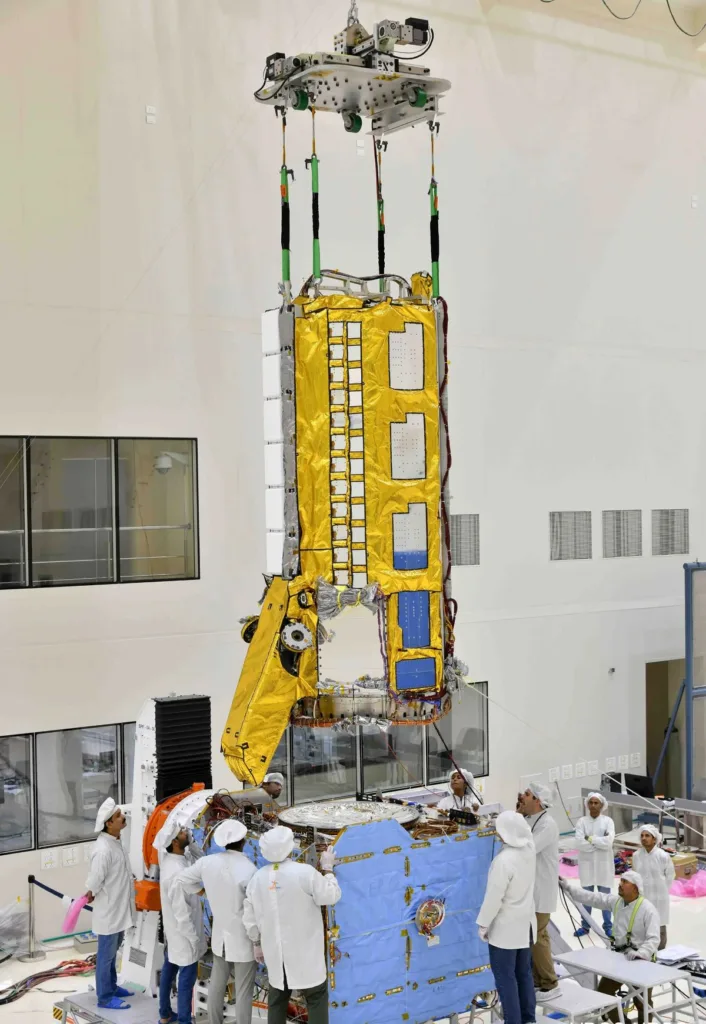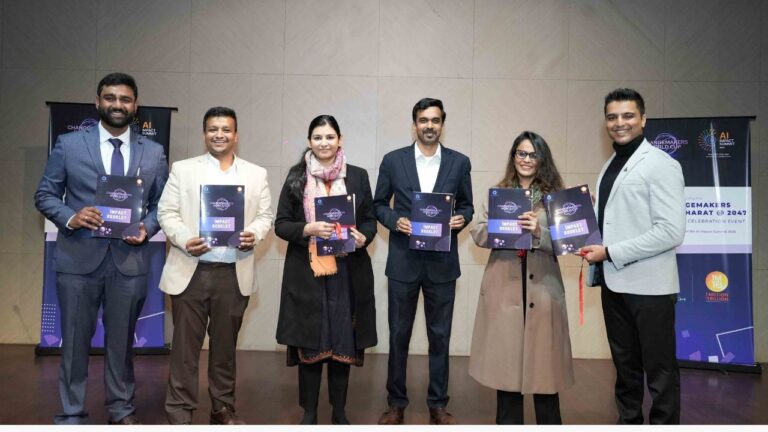
NASA-ISRO Joint Venture Nears Completion of Cutting-Edge Earth Observing Satellite (Image Courtesy: NASA)
NISAR satellite has achieved a significant milestone as its two major components were successfully combined into a single spacecraft. NISAR, short for NASA-ISRO Synthetic Aperture Radar, is a collaborative effort between NASA and the Indian Space Research Organisation (ISRO).
The satellite’s main purpose is to provide detailed monitoring of Earth’s land and ice surfaces, offering valuable insights into various aspects of our planet’s dynamics.
Scheduled for launch in early 2024, the NISAR satellite will revolutionize our understanding of forests, wetlands, agricultural lands, and other observable phenomena. With its ability to survey almost every part of the Earth at least once every 12 days, NISAR will capture data in unprecedented detail.
Resembling the size of an SUV and partially covered in gold-colored thermal blanketing, the cylindrical radar instrument payload of the satellite houses two radar systems. The S-band radar will prove invaluable in monitoring crop structure and the roughness of land and ice surfaces. Meanwhile, the L-band instrument is designed to penetrate dense forest canopies, allowing researchers to study the intricate details of tree trunks and other forest-related observables.
The S-band and L-band signals have wavelengths of approximately 4 inches (10 centimeters) and 10 inches (25 centimeters) respectively, enabling them to operate day and night, regardless of cloud cover.
The journey of the satellite payload has been extensive. The S-band radar was constructed at the Space Applications Centre in Ahmedabad, India, before being transported to NASA’s Jet Propulsion Laboratory (JPL) in Southern California in March 2021. At JPL, engineers had been working on the development of the L-band radar, and it was there that the two radar systems were integrated onto the payload’s barrel-like frame. The payload was then flown to the U R Rao Satellite Centre (URSC) in Bengaluru, India in March 2023.
Simultaneously, engineers and technicians at URSC, in collaboration with JPL teams, diligently worked on the development of the spacecraft’s main body, also known as the bus. The bus, covered in blue blanketing for protection during assembly and testing, is a combined effort of ISRO and JPL. It provides essential functionalities such as power, navigation, pointing control, and communications for the mission.

Following the union of the radar payload and the bus in a clean room at URSC in mid-June, teams from NASA and ISRO have been working together to route extensive cabling between the components. The satellite’s solar panels and a drum-shaped, wire-mesh reflector, which will unfold from a 30-foot (9-meter) boom, are yet to be attached. Once complete, the reflector, boasting a diameter of nearly 40 feet (12 meters), will be the largest radar antenna of its kind ever deployed in space.
Currently, the NISAR satellite is undergoing performance testing, followed by rigorous environmental testing to ensure its durability during launch and its ability to fulfill all operational requirements in orbit. Subsequently, the satellite will be transported approximately 220 miles (350 kilometers) eastward to the Satish Dhawan Space Centre, where it will be integrated into its launch fairing, positioned atop ISRO’s Geosynchronous Satellite Launch Vehicle Mark II rocket, and sent into a low Earth orbit.
More About NISAR Mission:
The NISAR mission signifies a momentous collaboration between NASA and ISRO, marking the first time these two agencies have jointly developed hardware for an Earth-observing mission. JPL, managed by Caltech for NASA, leads the U.S. contribution to the project, providing the L-band Synthetic Aperture Radar (SAR), the radar reflector antenna, the deployable boom, a high-rate communication subsystem for science data, GPS receivers, a solid-state recorder, and payload data subsystem. URSC, leading the ISRO component, is responsible for the spacecraft bus, S-band SAR electronics, the launch vehicle, as well as associated launch services and satellite mission operations.





